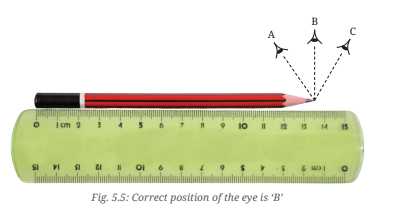Measurement of Length and Motion – Complete Guide for Class 6 Science Chapter 5

Welcome to iPrep, your Learning Super App. Our learning resources for the chapter, Measurement of Length and Motion in Science for Class 6th are designed to ensure that you grasp this concept with clarity and perfection. Whether studying for an upcoming exam or strengthening your concepts, our engaging animated videos, practice questions and notes offer you the best-integrated learning with interesting explanations and examples.
Objectives Of Learning The Chapter – Measurement of Length and Motion
The objective of learning the chapter “Measurement of Length and Motion” in Class 6 Science is to introduce students to the fundamental concepts of measuring length and understanding different types of motion. Through this chapter, students will explore the need for standard units of measurement, learn how to accurately measure objects using appropriate tools, and recognize various forms of motion, such as linear, circular, and oscillatory. By mastering these concepts, students will develop essential skills that will help them describe and quantify the physical world around them.
Introduction: A Journey with Deepa
Meet Deepa, a curious 11-year-old girl from Haryana. Her need for a new school uniform sparked an interesting discussion about measurements when her mother asked for two meters of cloth, and later requested the tailor to add “char angula” to the length. This simple event led Deepa and her friends to explore the fascinating world of measurement.
How Do We Measure?
As mentioned in the chapter Measurement of Length and Motion– For centuries, humans have used body parts to measure length. Farmers use strides, and in Deepa’s case, her mother used “angula” (finger width) to instruct the tailor.
Activity: Measuring with Body Parts
Deepa and her friends decided to measure the length of their classroom table using their handspans. They soon realized that the results varied because their hand sizes differed, leading to an insightful conclusion: personal units, such as handspan or foot, can vary greatly between individuals.
Name Number of Handspans Anish Slightly more than 13 Padma 13 Tasneem Slightly less than 13 Deepa Between 13 and 14 Hardeep 14
This exercise showed the need for standard units of measurement that don’t vary from person to person.
Standard Units of Measurement
According to the chapter Measurement of Length and Motion, to avoid confusion, standard units of measurement, like the International System of Units (SI), were developed. The SI unit for length is the meter (symbol: m).
- 1 kilometre (km) = 1000 metres
- 1 metre (m) = 100 centimetres
- 1 centimetre (cm) = 10 millimetres
Would it be practical to measure the distance between two cities using a meter? Or the thickness of a book page using a kilometer? The SI system provides flexibility with units like centimeters for smaller lengths and kilometers for larger distances.

Correct Way to Measure Length
As stated in the chapter Measurement of Length and Motion, when measuring length, it is essential to use the correct scale and technique.
- Use the correct scale: For example, a 15-cm ruler is ideal for measuring a pencil, while a meter scale or tape is needed for larger objects.
- Position the scale correctly: Place the scale along the object’s length and ensure your eye is level with the scale to avoid parallax errors.
- Handling broken scales: If a scale’s zero mark is broken, use another clear mark, and subtract the reading from the second end.
- When measuring length, it’s important to use the appropriate scale based on the object. For small objects like a pencil, a 15-cm scale is suitable, while a meter scale or measuring tape is used for larger items like a room’s height or the girth of a tree. Flexible tape is best for measuring curved surfaces.

| Key Tip: Visually challenged students use scales with raised markings to measure by touch. |
Measuring Curved Lines
Based on the chapter Measurement of Length and Motion, Measuring straight objects is easy, but how do we measure curved objects like arches or strings of light? Deepa’s friend Anish solved this by using a thread to follow the curve and then measuring the thread’s length with a meter scale.
Activity: Measuring Curved Objects
Using a flexible measuring tape or thread is the most practical way to measure curved lines, like the lights on a verandah arch.
Describing Position and Reference Points
When Deepa’s teacher planned a school trip to a garden, Deepa and her friends debated whether the garden was closer to the school. They learned that distances depend on the reference point. For example, if everyone measured from the bus stand, their observations would be consistent.
- Reference Point: A fixed object or point used to describe the position of another object.
This concept was further reinforced when Padma used kilometer stones along a road to track how close she was to Delhi. The kilometer stones indicated her position relative to Delhi as the reference point.
Motion: Understanding Movement
An object is in motion if its position changes concerning a reference point over time. For example, as Deepa sat in a moving bus, she noticed that while the passengers appeared to be at rest inside the bus, they were actually in motion relative to objects outside.
| Tip: To determine whether an object is moving, check if its position changes relative to a fixed reference point. |
Types of Motion
Motion can take various forms:
- Linear Motion: Motion along a straight line.
Example: A car moving on a straight road or a marching parade. - Circular Motion: Motion along a circular path.
Example: The motion of an eraser tied to a thread and whirled in a circle, or the movement of a merry-go-round. - Oscillatory Motion: Motion that moves back and forth along a fixed path.
Example: A swing moving to and fro, or an eraser suspended by a thread and allowed to oscillate.
Activity: Exploring Types of Motion
Deepa and her friends categorized motions they observed in a park:
Object Linear Motion Circular Motion Oscillatory Motion Swing Moving to and fro Bicycle Wheel Rotating Train Moving straight
Periodic Motion
Periodic motion refers to motion that repeats at regular intervals. Both circular and oscillatory motions are periodic, as they repeat their paths after a fixed interval of time.
Key Takeaways
- SI Units: The standard unit for measuring length is the meter (m).
- Reference Point: Position is described as a fixed reference point.
- Motion: An object is in motion if it changes its position concerning a reference point.
- Types of Motion: Linear, circular, and oscillatory motions are all common in our surroundings.
Conclusion
Understanding how to measure length and describe motion is essential for understanding the physical world. Whether it’s measuring the height of a tree, tracking your journey on the road, or identifying the type of motion in everyday objects, mastering these concepts opens the door to countless applications in science and beyond.
In conclusion, the chapter “Measurement of Length and Motion” for CBSE Class 6th Science introduces fundamental concepts that are essential for understanding the physical world around us. From learning about standard units of measurement like meters to recognizing different types of motion—linear, circular, and oscillatory—this chapter lays the foundation for more complex scientific topics. With iPrep’s engaging resources, such as animated videos, practice exercises, and detailed notes, mastering the chapter “Measurement of Length and Motion” becomes easier and more enjoyable. So, dive deeper into the concepts, and let the iPrep Learning Super App guide you through the fascinating journey of “Measurement of Length and Motion.
Practice questions on Chapter 5 - Measurement of Length and Motion
Get your free Chapter 5 - Measurement of Length and Motion practice quiz of 20+ questions & detailed solutions
Practice Now








